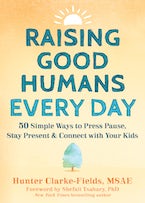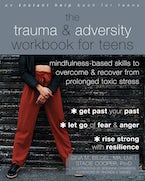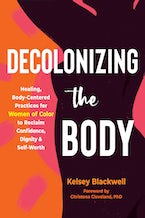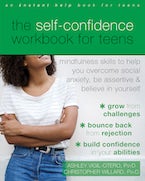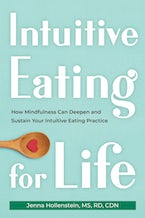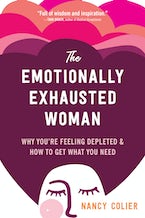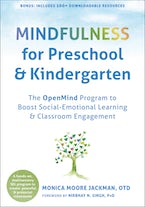- Home
- Mindfulness
- Health and Wellness
- A Still Quiet Place for Athletes
A Still Quiet Place for Athletes
Mindfulness Skills for Achieving Peak Performance and Finding Flow in Sports and Life
by Amy Saltzman
Foreword by Jim Thompson
Published by: New Harbinger Publications
Imprint: New Harbinger Publications
Find flow and reach peak performance—in sports and in life. Based on the groundbreaking Still Quiet Place mindfulness program, this workbook provides practical, step-by-step exercises and skills to help you gain present-moment awareness and achieve your athletic goals.
Are you looking for unique ways to "get into the game"? To enhance your training and find focus? You aren’t alone. Increasingly, athletes and coaches—from amateur leagues to professional football champs to Olympic athletes—are incorporating mindfulness practices into their training. That’s because mindfulness can help you lower your stress levels, connect with the moment, and mentally bounce back after setbacks. So whether you're a sports enthusiast or a professional athlete, mindfulness can also help you deal with physical aspects of training, such as fatigue, aches, pains, injury, burnout, and exhaustion.
Written by holistic physician, mindfulness coach, and long-time athlete Amy Saltzman, this practical workbook offers mindfulness-based skills you can use any time throughout your athletic career, as well as in daily life. You’ll discover what the author fondly refers to as the “still quiet place,” and from the vantage point of that stillness, you’ll be able to observe your thoughts, feelings, and physical sensations—before and during practice and competition, between events, after a miss or significant loss, or exhilarating win. You’ll also find skills for dealing effectively with teammates and coaches, as well as skills for coaching mindfully. A parents guide is also included.
No matter what sport you play, 90 percent of performance is mental. With this workbook as your guide, you can use mindfulness to enhance your training, competitive performance, and your life beyond athletics.
Introduction 1
Body 1
Spirit 2
Mind 3
Body, Mind, and Spirit 4
Part 1: The Fundamentals—Mindfulness
1. Welcome 9
Mindfulness 9
Finding Flow 10
How to Use This Book 13
Notes 14
2. Taking a Rest, Taking a Breath 17
Basic Concept: The Benefits of Mindfulness 17
Practice: Rest 20
Reflection: What Was It Like to Rest? 21
Activity: Bowing In and Bowing Out 22
Practice: Between Bowing In and Bowing Out 24
Activity: Pleasant Events 24
3. Bringing Awareness to the Body 29
Basic Concept: Mindfulness of the Body 29
Practice: Body Scan 30
Reflection: Body Scan 33
Activity: Finger Yoga 34
Practice: Embodied Warm-Ups and Cooldowns 34
Activity: Seeing and Feeling—Visualize and Body-ize 35
Practice: Breathing Into and Through 36
Activity: Outward as Well as Inward 36
Practice: Seeing Space and Opportunity 37
4. Self-Care 39
Basic Concept: Fine-Tuning 39
Basic Concept: Wise Effort and Injury Prevention 48
Basic Concept: Energetic Bank Account 50
Activity: Maintaining a Positive Balance in Your Energetic Bank Account 50
Activity: Precompetition Ritual 54
5. Getting Your Head in the Game 57
Basic Concept: Thought Watching 57
Practice: Thought Watching 58
Practice: Bubbles 58
Activity: Nine Dots 60
Reflection: Thinking Outside the Box 63
Activity: A Challenge 64
Basic Concept: Unkind Mind 65
Activity: Comparison 65
Activity: Positive Scanning and the Magic Ratio 67
Activity: Positive Inner Instruction 70
Basic Concept: Beyond Unkind Mind—Nonjudgmental Awareness 73
6. Befriending Feelings 75
Basic Concept: It’s Okay to Feel Anxious 75
Practice: Befriending Feelings 76
Reflection: How Did It Feel to Befriend Your Feelings? 77
Activity: Having Your Feelings Without Your Feelings Having You 78
Reflection: Dealing with Feelings 79
Basic Concept: Tuning Your Instrument 79
Basic Concept: Emotion Theory—Watching
the Waves 80
Basic Concept: Refractory Period 81
Activity: Watching Your Emotional Waves 82
Activity: Embodying Emotion 85
Activity: Unpleasant Events 87
7. Responding Rather Than Reacting 93
Basic Concept: Holes and Different Streets 93
Practice: ABCs 97
Reflection: The Power of Responding 97
Activity: Holes 98
Activity: Responding, or Choosing a Different Street 99
Part 2: Advanced Skills—Integration
8. Facing Challenges 105
Practice: PEACE 105
Practice: Befriending Physical Pain 107
Activity: Suffering = Pain x Resistance 108
Basic Concept: Humor 109
Basic Concept: Good News, Bad News, Who Knows? 110
Basic Concept: It Is Happening for Me, Not to Me. 112
Basic Concept: This Too Shall Pass—Impermanence
and Equanimity 113
Basic Concept: Faith, Patience, and Perseverance 113
Activity: Next Sane and Joyful Step 117
Basic Concept: Quitting or Transitioning 117
9. Mistakes, Self-Compassion,
and Intentions 121
Activity: Mistake Rituals 121
Activity: Self-Esteem 122
Practice: Self-Compassion 125
Activity: There’s a Winner and a… 128
Activity: Goals and Intentions 131
10. Being a True Teammate 133
Practice: Filling Your Teammates’ Emotional Tanks 134
Basic Concept: Reading the Mental and Emotional Game 136
Basic Concept: Emotional Wave Theory 137
Activity: Mindful Communication 139
Basic Concept: Acceptance—You Can’t Always Get What You Want 142
Practice: If You Spot It, You Got It 142
Basic Concept: Compassion 145
Practice: Kindness and Compassion 146
Basic Concept: Generosity 147
Activity: Generosity 147
Basic Concept: Inclusion 148
Basic Concept: Beyond Generosity—Making
Each Other Better 149
Practice: Forgiving Others 150
Practice: Stretching Toward Sympathetic Joy 151
11. Almost Moments, Sportsmanship, and Integrity 153
Basic Concept: Respect and Integrity 154
Basic Concept: When No One Is Looking 155
Practice: THINK! Before Texting or Posting 156
Reflection: THINK! About the Comments of Others 157
Basic Concept: Mistakes, Apologies, and Amends 158
Practice: Apology 159
Practice: Forgiving Yourself and Asking for Forgiveness 161
12. Habits of Excellence 163
Practice: Gratitude 163
Activity: Responsibility—No
Excuses 164
Basic Concept: Preparedness and Flexibility—Expect
the Unexpected 165
Basic Concept: Finishing—It’s
Not Over Until It Is Over 166
Activity: Joy—A
Powerful Source of Flow 167
Activity: Fluidity—Moving
Along Continuums 168
Basic Concept: Sportsmanship—It
Is About More Than the Game 169
Basic Concept: Freedom—Also
Known as Nonattachment 169
Basic Concept: Vigilance and Addictive Mind 170
Activity: Humility—No
One Does It Alone 174
Practice: Being of Service and Paying It Forward 175
13. For the Love of the Game 181
Basic Concept: Practice Makes… 183
Practice: Flashlight 184
Activity: Love of the Game 185
Reflection: Beyond Competition 186
Part 3: Skills for Coaches and Parents
14. For Coaches 191
Reflection: My Coaching 192
Activity: Intentionally Creating the Culture 194
Practice: The Magic Ratio and Filling Emotional Tanks 195
Activity: Attending to Individual Athletes 196
Reflection: Attending to the Team as a Whole 200
Practice: Three Questions to Build Connection 202
Practice: Responding Rather Than Reacting 203
Activity: Mindful Communication 204
Basic Concept: Player-to-Player
Communication 205
15 For Parents 207
Activity: Your Data 208
Activity: Your Child’s Data 211
Practice: Listening with Love for Understanding 214
Reflection: How Did We Get Here? 215
Basic Concept: Scholarships—The Reality 216
Reflection: You’re Being Evaluated Too 220
Reflection: Why Practice Mindfulness? 220
Reflection: Recognizing When We Pressure Our Children 220
Practice: Choosing Your Behavior 222
Acknowledgments 225
Appendix: Nine Dots Puzzle Solution 227
Selected Reading 229
References 231
She is recognized as a visionary and pioneer in the field of mindfulness for youth. She is founder and director of the Association for Mindfulness in Education; an inaugural and long-standing member of the steering committee for the Mindfulness in Education Network; and founding member of the Northern California Advisory Committee on Mindfulness.
As a mindfulness coach, Saltzman’s passion is supporting people of all ages in finding flow. She resides in the San Francisco Bay Area, where she provides holistic medical care and mindfulness coaching. She is available in person and via the web to offer introductory presentations, workshops, and eight-week courses to individuals and teams aspiring to enhance their performance in any domain. For more information, visit www.stillquietplace.com.
Foreword writer Jim Thompson is founder and CEO of Positive Coaching Alliance (PCA). PCA’s vision of youth sports as a Development Zone has attracted the support and involvement of many elite coaches, athletes, academics, and business leaders in this country. Thompson received the inaugural ETHOS Award from the Institute for Sports Law and Ethics (ISLE) in 2013, and now serves on the ISLE Board. He also serves on the faculty of Stanford University’s continuing studies program, where he teaches courses in coaching, leadership, sports, and spirituality.
“Amy Saltzman takes the mystery out of mindfulness by introducing easily understood concepts and practical activities that can be immediately applied to any sport. This is a valuable resource for athletes of all levels, as well as coaches who want to help their athletes and teams perform mindfully.”~Pete Kirchmer
—Pete Kirchmer, mPEAK (mindfulness Performance Enhancement Awareness and Knowledge); director of the University of California, San Diego’s Center for Mindfulness; mindfulness-based health coach
“In every athletic career, there are crucial moments—moments when an athlete’s inner voice can make or break her performance. Being mindful and present in these moments is the key to athletic success. And yet athletes, coaches, and parents often overlook how to do just that. This book will become your new guide and will ensure, when your moments come, that you will be ready.”~John O’Sullivan
—John O’Sullivan, founder of the Changing the Game Project, and author of Changing the Game
“In my experience, the path to being your best, in sports and in life, always passes through the Still Quiet Place. Learning how to get there will prepare you for any challenge you might face. If you are ready to put in the same degree of work mentally as you do physically, the steps outlined in this book will help you get to the next level of your game.”~Cassidy Lichtman
—Cassidy Lichtman, two-time first-team All-American at Stanford University in volleyball; gold medalist in the Pan American Games, 2015; silver medalist in the Grand Champions Cup, 2013; assistant coach for the 2016 NCAA Champions at Stanford
“Mindfulness is a practice to pay attention to the here and now. Every athlete and coach knows the value of that. This book helps you get there more habitually.”~Dan Quinn
—Dan Quinn, head coach of the Atlanta Falcons of the National Football League (NFL)
“Amy Saltzman’s A Still Quiet Place for Athletes is a superb introduction to mindfulness and its practical application for athletes and coaches. This compelling, accessible book will help you achieve elite-level performance success!”~Cornelia Cannon Holden, MDiv
—Cornelia Cannon Holden, MDiv, team building, leadership development, and sports psychology coach for US Women’s Ice Hockey (2006-2010); CEO at Mindful Warrior www.mindfulwarrior.com)
“In A Still Quiet Place for Athletes, Amy Saltzman gives real strategies and techniques that are not just for athletes, but for coaches, teachers, and parents who see athletics as preparation for life. All I can say is I wish I had this book as a kid growing up in my sports-obsessed childhood.”~Tim Ryan
—Tim Ryan, US representative from Ohio and author of A Mindful Nation
“A Still Quiet Place for Athletes is an instructive and interactive tool, tailor-made for athletes at every level of competition. The book offers a wide range of skills related to achieving peak performance—including mindfulness, self-care, how to face challenges, and creating habits of excellence. ... Overall, this book is a great instrument for practitioners and coaches who work with athletes as they pursue excellence in their sport.”~Logan Lyons
—Logan Lyons, PhD candidate and sport psychology consultant
“I am energized after reading Amy Saltzman’s A Still Quiet Place for Athletes. This unique text fills an important gap in our field, and has the potential to be a wonderful resource for athletes, coaches, and practitioners. The book affords the reader not just the what, but also the how when it comes to achieving peak performance. Specifically, it highlights strategies for readers to seek their own inner ‘quiet’ through mindfulness, self-care, and the creation of habits of excellence.”~Travis Dorsch, PhD
—Travis Dorsch, PhD, assistant professor of human development and family studies, and founding director of the Utah State University Families in Sport Lab
“A Still Quiet Place for Athletes is an amazing, comprehensive book that covers all the bases and addresses the concerns of athletes, coaches, and parents, for both sports and life. Grounded in research, personal experience, and a lifelong commitment to training and developing athletes of all competitive levels to peak performance and access to ‘a still quiet place.’”~George T. Mumford
—George T. Mumford, author of The Mindful Athlete
“Saltzman has written a practical guide for training mindfulness in sport. She provides concrete tools and real-world applications that are easily accessible for competitive athletes at all levels. A Still Quiet Place for Athletes is an outstanding new resource for mental training!”~Kelli Moran-Miller, PhD
—Kelli Moran-Miller, PhD, licensed psychologist and certified mental performance consultant



